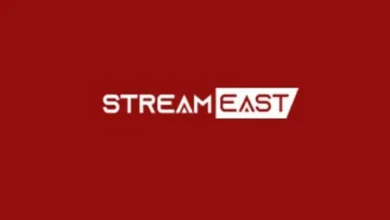Importance of Human Resource Management in Modern Organizations

In today’s dynamic and ever-evolving business landscape, the role of Human Resource Management (HRM) is more critical than ever. HRM encompasses the strategic and coherent approach to managing an organization’s most valuable assets—its people. As companies navigate complex market conditions, technological advancements, and shifting workforce dynamics, effective HRM becomes a cornerstone of organizational success.
The Core Functions of Human Resource Management
At its essence, HRM involves a variety of functions designed to optimize the performance and engagement of employees. These include:
- Recruitment and Staffing: Identifying talent needs, attracting qualified candidates, and selecting the best individuals to fill roles within the organization.
- Training and Development: Providing ongoing learning opportunities to help employees enhance their skills and advance their careers.
- Performance Management: Establishing clear performance expectations, providing feedback, and conducting evaluations to ensure employees meet organizational goals.
- Compensation and Benefits: Developing competitive pay structures and benefits packages to attract and retain top talent.
- Employee Relations: Fostering a positive work environment through conflict resolution, employee engagement initiatives, and communication strategies.
- Compliance and Legal Issues: Ensuring that the organization adheres to labor laws and regulations, thereby reducing legal risks.
Why HRM is Vital in Modern Organizations
- Attracting and Retaining TalentIn a competitive job market, attracting and retaining top talent is a significant challenge for many organizations. HRM plays a crucial role in creating a compelling employer brand, designing attractive job postings, and implementing effective onboarding processes. Additionally, by offering competitive compensation, benefits, and career development opportunities, HRM helps to retain employees, reducing turnover costs and maintaining organizational stability.Example: A tech company looking to attract skilled software engineers can leverage HRM strategies to create enticing job offers and career advancement programs, making it a desirable place to work.
- Driving Employee Engagement and ProductivityEngaged employees are more productive, motivated, and committed to their organizations. HRM fosters employee engagement through initiatives such as performance appraisals, recognition programs, and career development opportunities. By aligning employees’ goals with organizational objectives and providing a supportive work environment, HRM enhances productivity and drives business success.Example: A retail company can implement HRM practices such as employee recognition awards and regular feedback sessions to boost morale and productivity among its sales staff.
- Facilitating Organizational ChangeChange is inevitable in today’s business environment, whether it’s due to technological advancements, market shifts, or internal restructuring. HRM is essential in managing these changes by preparing and supporting employees through transitions. Effective HRM ensures that change is communicated clearly, training is provided where needed, and employee concerns are addressed, thus minimizing resistance and disruption.Example: A manufacturing firm introducing new automated machinery can rely on HRM to provide necessary training and support, ensuring a smooth transition and continued operational efficiency.
- Enhancing Organizational CultureA strong organizational culture fosters a sense of belonging and aligns employees with the company’s values and mission. HRM plays a pivotal role in shaping and sustaining this culture through policies, practices, and initiatives that reflect the organization’s core values. This includes everything from recruitment and onboarding practices to employee engagement activities and communication strategies.Example: A startup company emphasizing innovation and collaboration can use HRM to design team-building activities and transparent communication channels that reinforce these cultural values.
- Ensuring Legal Compliance and Risk ManagementNavigating the complex landscape of labor laws and regulations is a critical responsibility of HRM. By ensuring compliance with employment laws, safety regulations, and industry standards, HRM protects the organization from legal risks and financial penalties. Additionally, HRM manages risks associated with employee relations, workplace safety, and data privacy, safeguarding the organization’s reputation and operational integrity.Example: An international corporation operating in multiple countries can depend on HRM to manage diverse regulatory requirements and maintain compliance across its global workforce.
- Supporting Strategic Planning and Decision MakingHRM provides valuable insights and data to support strategic planning and decision-making processes within the organization. By analyzing workforce trends, performance metrics, and employee feedback, HRM helps to identify areas for improvement and informs decisions related to talent management, organizational development, and business strategy.Example: A healthcare provider can use HRM data to identify staffing needs, improve patient care services, and plan for future growth based on demographic trends and workforce analysis.
Implementing Effective HRM Practices
To maximize the benefits of HRM, organizations should adopt a proactive and strategic approach. Key practices include:
- Aligning HRM with Organizational Goals: Ensuring that HRM strategies and initiatives support the overall business objectives and contribute to the organization’s success.
- Investing in Employee Development: Providing continuous learning opportunities and career development programs to help employees grow and thrive.
- Fostering a Positive Work Environment: Creating a workplace culture that promotes engagement, collaboration, and well-being.
- Leveraging Technology and Data: Utilizing HR technology and analytics to streamline processes, enhance decision-making, and improve employee experiences.
- Prioritizing Communication and Transparency: Maintaining open and honest communication with employees to build trust and alignment.
Conclusion
In modern organizations, the importance of HRM cannot be overstated. HRM is integral to attracting and retaining talent, driving employee engagement, managing change, and supporting strategic goals. By fostering a positive organizational culture and ensuring compliance with legal standards, HRM not only enhances individual and team performance but also contributes to the overall success and sustainability of the organization.
As the business world continues to evolve, investing in effective HRM practices will be crucial for organizations seeking to navigate change, innovate, and thrive in a competitive landscape.



